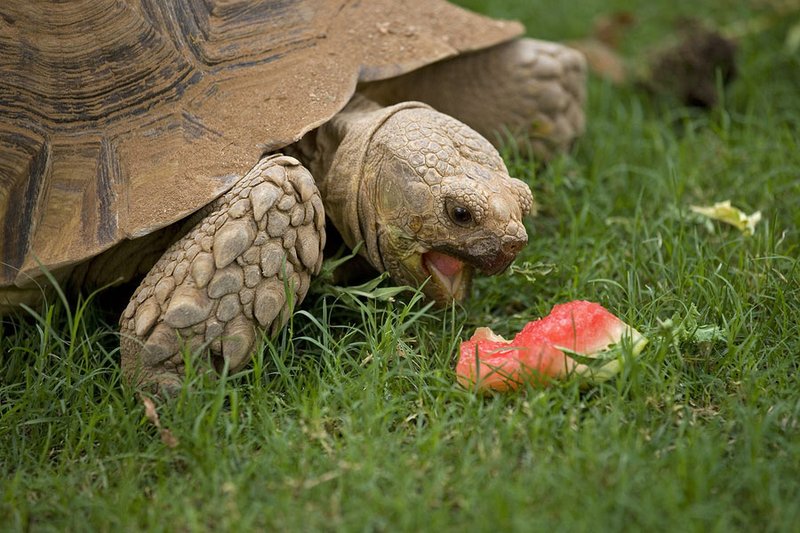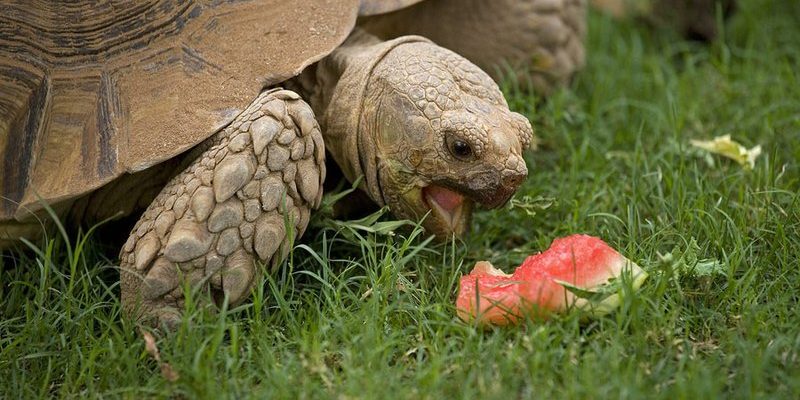
You see, tortoises are not just passive grazers; they have specific diets and hunting methods that suit their needs. Whether it’s in a garden or the wild, the food they consume and how they hunt can reveal so much about their behavior and overall health. With numerous species around the globe, from the majestic Galápagos tortoise to the smaller box turtle, each has its own unique tastes and habits. Let’s dig deeper into what these creatures enjoy eating and how they manage to hunt down their meals.
Understanding a Tortoise’s Diet
Tortoises are primarily herbivores, which means they primarily eat plants. However, their diet can vary depending on their species and their environment. Some tortoises might also munch on insects or small animals occasionally, but it’s mostly greens, flowers, and fruits that they love. Think of a tortoise’s diet like a salad bar—there’s a mix of items they can choose from, resulting in a colorful plate that keeps them healthy.
For example, common food choices include:
- Grasses and hay
- Leafy greens like romaine or dandelion greens
- Vegetables such as squash and carrots
- Fruits like strawberries and bananas (in moderation)
You might be wondering why they need such a varied diet. Well, different plants provide essential nutrients that help tortoises maintain their health. For instance, calcium is crucial for building strong shells, while fiber aids digestion. So, ensuring they have access to a variety of food is key to their well-being.
Where Do Tortoises Find Their Food?
Tortoises are not the best at hunting in the traditional sense. Instead, they rely on their surroundings to provide tasty snacks. Usually, they roam around their habitat, looking for fresh greens and juicy fruits. Some species love to graze on grassy areas, while others might prefer dense brush where they can find leaves and flowers.
Their keen sense of smell plays a big role in finding food. Tortoises use their noses to sniff out tasty plants from a distance, much like how a dog finds its favorite treat. You could say they have their own *food radar* that guides them toward the best salad options in the area. This instinct is vital, especially in the wild, where food sources can vary greatly depending on the season.
When it comes to keeping tortoises at home, it’s essential to replicate this natural foraging behavior. Providing a variety of edible plants and safe fruits will keep them engaged and healthy. You can even create a little garden just for them—how cool is that?
The Role of Sunlight and Water
You might not think of sunlight when considering what a tortoise eats, but it plays a significant role in their diet. Tortoises need sunlight to help their bodies process calcium, which is crucial for their shell growth and overall health. Imagine sunlight as the seasoning that brings out the flavors in a dish; without it, their food doesn’t provide the same benefits.
Water is equally essential. Tortoises often get moisture from the foods they eat; however, they still need access to fresh water. A shallow bowl of water can be a delightful drinking spot, ensuring they stay hydrated—especially in warmer climates. If they don’t get enough moisture, they can become dehydrated, leading to health issues. So, keeping that water bowl full is as important as providing a varied diet.
How Tortoises Hunt for Food
Now, while tortoises don’t hunt in the way predators do, they do exhibit some interesting behaviors when it comes to seeking out their meals. Instead of chasing down potential food sources, they patiently move about, investigating every nook and cranny. Their sharp eyesight and sense of smell help them spot delicious plants from afar.
When they find something appealing, tortoises use their strong beaks to tear off pieces of vegetation. This is quite impressive considering how tough some plants can be! They might take their time munching and chewing, allowing them to savor the flavors. And let’s not forget, tortoises have a knack for flipping over stones or moving around leaves to uncover hidden treats. It’s like they’re having their own little treasure hunt.
As they explore, they also engage in social behaviors. Sometimes, they might even share food with other tortoises. This can be a fascinating aspect of their interactions and adds another layer to their feeding habits. Watching them forage can be both entertaining and enlightening—you might witness some surprising behaviors!
The Impact of Environment on Diet
The environment where a tortoise lives greatly influences what it eats. For example, desert tortoises have adapted to dry conditions, thriving on cacti and other drought-resistant plants. In contrast, aquatic tortoises munch on water plants. Each tortoise species has evolved to thrive in its specific habitat, reflecting its unique dietary needs.
When considering the diet of a tortoise at home, it’s crucial to mimic these environmental factors. If you have a tortoise that hails from arid regions, providing dry grasses and specific plants will help replicate its natural environment. On the other hand, a tortoise from a more temperate area might need a variety of leafy greens and fruits.
By understanding the relationship between a tortoise’s environment and diet, you can better care for your shelled friend. Creating a habitat that resembles their natural setting will contribute significantly to their overall health and happiness.
Common Dietary Issues and Solutions
Like all animals, tortoises can face dietary challenges. One common issue is obesity, especially in captive tortoises that have a diet too rich in fruits or commercial pellets. Overweight tortoises may struggle with mobility, which can lead to other health risks. It’s essential to balance their diet by focusing on more fibrous plants.
Another issue is calcium deficiency, which can harm their shells and bones. You can help prevent this by providing calcium-rich foods and considering a supplement if necessary. Regular vet check-ups can also help identify any dietary problems before they become serious.
If your tortoise shows signs of digestive issues, like lethargy or abnormal stool, it might be worth reviewing their diet. Ensuring they have enough roughage and variety is crucial. And remember, changes should happen gradually to avoid shocking their systems.
Feeding Your Tortoise: Tips and Best Practices
Feeding your tortoise can be a fun experience, but it does require some thought. Here are a few tips to keep in mind:
1. Variety is Key: Mix different greens, vegetables, and occasional fruits to keep their diet balanced and interesting.
2. Freshness Matters: Always offer fresh, clean food. Wilting or rotting plants can lead to health problems.
3. Monitor Portions: Be mindful of portion sizes, especially with fruits and higher-calorie foods.
4. Hydration: Always provide fresh water to keep your tortoise hydrated, especially in warm weather.
5. Know Your Species: Research the specific dietary needs of your tortoise species to tailor their diet appropriately.
By following these best practices, you’ll be setting your tortoise up for a long and healthy life.
In conclusion, understanding what a tortoise eats and how it hunts isn’t just about knowing their diet; it’s about appreciating their unique behaviors and adaptations. With the right care, they can thrive and bring joy to their owners. So, the next time you see a tortoise munching away, remember there’s a whole world of fascinating eating habits happening right under that hard shell!

